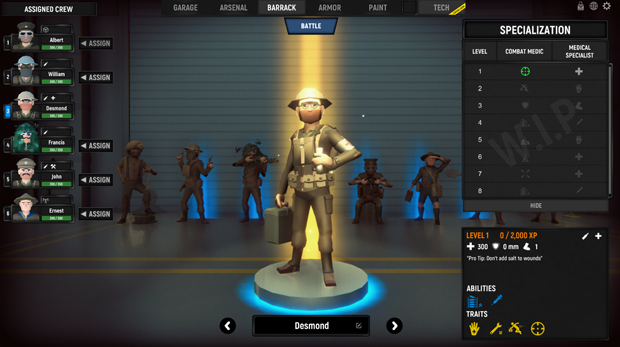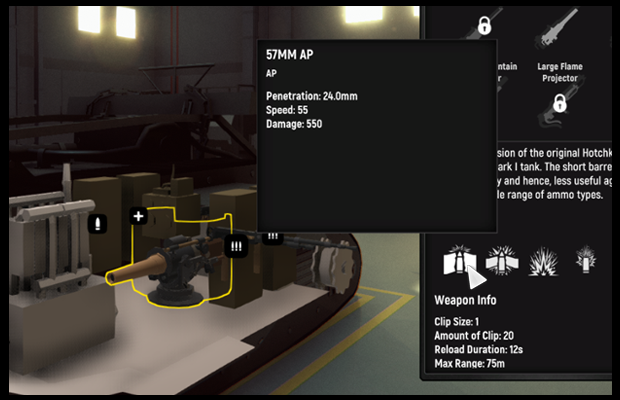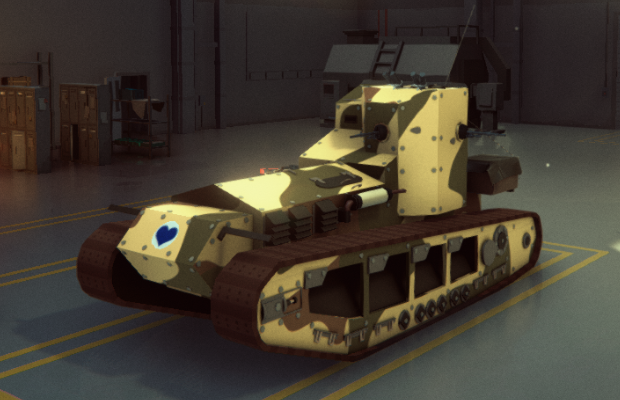
May 10, 2019
Armored Battle Crew [World War 1] - Tank Warfare and Crew Management Simulator - skullwolf
Hey Tankers!
Today, we'll invite you on a tour of the Garage!


Hint: Free Garage Slot!


Tons of weapons to choose from!

Say hi to Desmond!

Err.. is there chainmail?

Who said a tank can't look pretty in combat?

Hmm... what should I unlock first?
Alrighty! You should be familiar with the garage now!
Stay tuned for more insight and be sure to WISHLIST the game so that you are ready to roll out when the fighting starts!
As always, join us on Discord to chat about the game and tanks!
Lastly, drop a comment and like if you like what you are seeing/reading!
Armored Battle Crew Team
Today, we'll invite you on a tour of the Garage!

Garage
The garage is where you'll get a chance to tinker with your vehicles before going into battles. Here you can change your tanks' weapon loadout, adjust armor and customize your ride with camo and decals!Vehicle Carousel
You can add, remove, and switch vehicles using the carousel. Adding new vehicle is free as long as you've unlocked the vehicle.
Hint: Free Garage Slot!
Vehicle Info Panel
Important stats of the selected vehicle. 
Arsenal
Each module of the selected vehicle can be modified based on your needs and wants. They range from weapons, engines, storage modules to fuel tanks and tracks.
Tons of weapons to choose from!
Barrack
You can find all your crew in the barrack. Use the Assigned Crew Panel on the left to assign crew to your selected vehicle. More details such as health, movement speed, traits, abilities and specializations can be found on the Crew Info Panel on the right.
Say hi to Desmond!
Armor
Additional armor can be mounted on the vehicle for better protection. Be mindful that additional armor increase the weight of any vehicle and reduces mobility! So, choose wisely!
Err.. is there chainmail?
Paint
Feel free to change the Camo and Decal that adorn your vehicle. Camo and Decal customisations are purely cosmetic and can be filtered between historical and creative (non-historical) versions.
Who said a tank can't look pretty in combat?
Tech
More vehicles and modules can be unlocked from the Tech Tree using XP gained in battle.
Hmm... what should I unlock first?
Alrighty! You should be familiar with the garage now!
Stay tuned for more insight and be sure to WISHLIST the game so that you are ready to roll out when the fighting starts!
As always, join us on Discord to chat about the game and tanks!
Lastly, drop a comment and like if you like what you are seeing/reading!
Armored Battle Crew Team















































